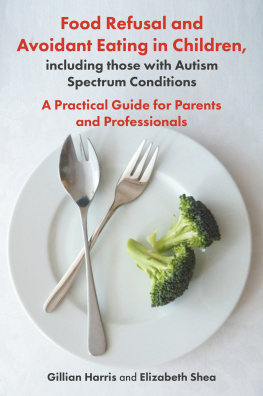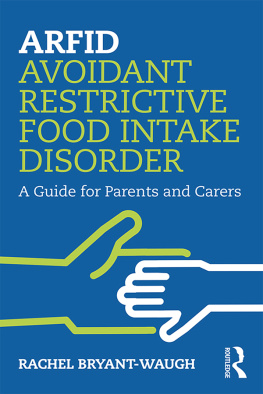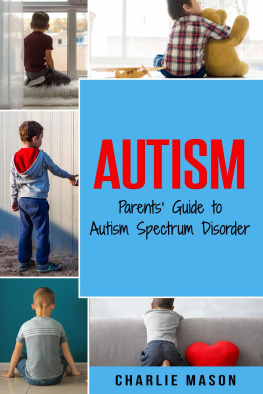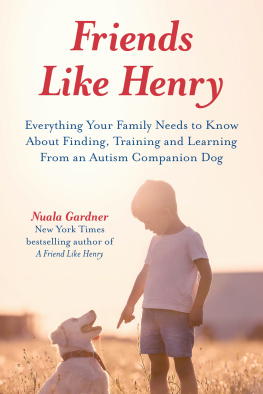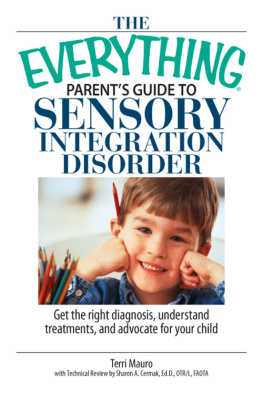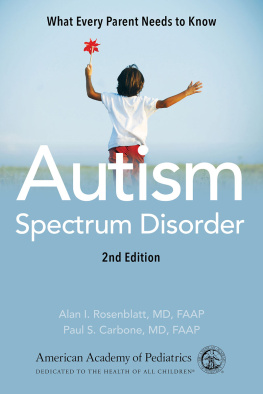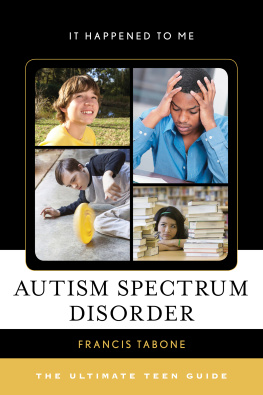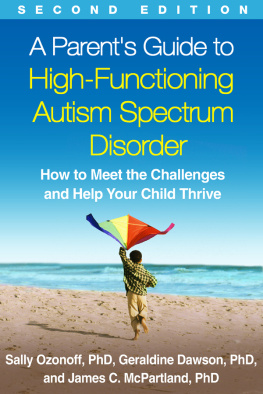
Food Refusal and
Avoidant Eating in
Children, including
those with Autism
Spectrum Conditions
A Practical Guide for Parents
and Professionals
Gillian Harris and Elizabeth Shea

Jessica Kingsley Publishers
London and Philadelphia
Contents
Part 1. Acceptance and Rejection of New Foods
in Infancy and Childhood: Development Stages
Part 2. Avoidant and Restrictive Eating:
Strategies and Interventions
Introduction
Dr Gillian Harris
I am very lucky to have two children who ate very well; they were not particularly fussy and would eat most things given to them. One of the two was more experimental perhaps and enjoyed her food more than the other, but neither of them posed a problem for me. They grew well; they would eat home-prepared food and were happy with school dinners. They both slept well; their behaviour was just as you would expect from two typical infants and toddlers.
What did I do to deserve these two easy eaters? Nothing; I was just lucky. Not so, though, with my first child. I was very young when they sent me home with my first baby. I couldnt really believe that they would just pack me off with this unknown entity, and without the users manual, and leave me alone at home to look after her. But they did, and so I learned my trade the hard way, by experience. My first daughter didnt want to eat; she didnt want milk, and when the time came to introduce solid foods, she didnt want those either. She would eat one kind of baby fruit puree and possibly some boiled egg. If I left a few raisins on her tray and didnt look at her, she would occasionally eat those. I took her to the health visitors; she was growing fine, no problem. What I didnt realise was that she was small for a term baby, always bumping along the bottom centile lines of the growth charts and never destined to be tall. She doesnt quite make five foot now as an adult, so she didnt need as much food as it said in the books and leaflets that I pored over. And she was sensory-hypersensitive, so destined to be extremely fussy as well. I dreaded mealtimes; I would insist that my husband got home in time for her tea. It took two of us to coax her to eat even a little, but at least it was less stressful with someone else there. There were other things that were different as well. She hated being cuddled or held. She could not be soothed to sleep, and she would cry for hours when tired. The only thing that worked was driving her round in the car until she finally gave in, or racing along the pavement with her in her pram. Her baby photos show a happy, chubby, healthy baby. Her mummy photos show someone very anxious, and very worn out.
As she grew older, she continued to be fussy. She would eat nothing mixed and nothing slimy. Fish and mushrooms were definitely out. If I chopped them very small, she still found them. One evening her father tried to be strict and insist she ate some fish. She refused, she was sent to her room and she stayed there. She would rather go without than eat it, so we never tried that again. She went to school with her carefully packed lunches, disliked the smell of other peoples food and was wary of new foods. She was an anxious child, easily upset by changes in routine and environment. Luckily, she went to a small local school, she learned to read at an early age and gradually all changed for the better.
This was well over 40 years ago, and as my career in psychology gradually progressed, my interest moved from developmental psychology to eating behaviour in children. Why didnt they eat? Why was it always the mothers fault (in those days it was always the mother)? My other children ate well, so what was it about my firstborn? And why did she line up cars that she had collected and ask for a garage rather than dolls? She was impossible to get to sleep at nights. Her father and I would fall asleep reading to her. She would stay awake, playing quietly over our sleeping bodies. Eventually, at midnight she might drop off, but at 4am she would be up again in our bed, running her cars and trucks up and down my sleeping body. She was such an escape artist that we put her into a bed rather than a cot at an early age. So what was going on? She couldnt be on the spectrum, because girls didnt have Aspergers syndrome. And why is it that now she is an excellent and experimental cook, trying new things? My other children remember with horror the rather limited diet that they all had to eat as she got older, many meals involving frozen crispy cheese pancakes, a well-known convenience food at the time. So yes, for some time it did affect family life, but I was lucky. The eating problems resolved, and by late childhood she was eating a reasonably wide and acceptable range of foods. She could take a packed lunch to school and eat with us when we went out for meals.
I had by then started research into infant and childrens food acceptance and refusal, when I was asked to help a colleague (a gastroenterologist), because he had children attending his clinics who were vomiting at mealtimes, or refusing to eat, with no medical or physical cause. My involvement in these clinics led to my decision to train as clinician. For the rest of my working life I was lucky enough to work as a clinician with infants and children who couldnt or wouldnt eat, while also carrying out research to underpin my clinical work and interventions. I was also fortunate to be able to work in joint clinics with Sarah Mason, and this too increased my knowledge base. I have learned much from my research and clinical colleagues, but mostly I have learned what I know from the children I have met along the way. I also know what it feels like to be a parent faced with a child who just wont eat, and the children in my clinic have made me aware of what it is like to be faced with food that you just cant eat, surrounded by adults who are desperate that you should eat it. Adults so desperate that they will force you, coax you, plead with you anything to get that food down. So although I sympathise with the parents of the children I have worked with, my starting point in any intervention has always been from where the child is, starting with what they could eat, what they could cope with, and moving on with them from there.
Dr Elizabeth Shea
I like to solve puzzles and one of the most enduring and interesting for me during my career has been working out why people on the autism spectrum eat the way they do and what we can do about it.
This interest began at the start of my psychology career. I came to psychology via a varied path that had taken me to art school, primary school teaching, working in museums, libraries, in business and in counselling children. When I finally settled on psychology, I landed my first real job with the National Autistic Society working as a care worker in a residential school. Back then, I knew very little about autism and even less about the psychology of eating. Nevertheless, my first task on my first day in the new job was to cook dinner for eight young men on the spectrum.
I wasnt much of a cook back then (and Im still not!), but fortunately scheduled on the menu that night was what I then considered to be my signature dish of spaghetti bolognaise. What could possibly go wrong? Having negotiated the unfamiliarity of a large industrial kitchen, I soon proudly presented my masterpiece to the young men in my care and was surprised and flummoxed as to what happened next. Some of them ate it; in fact, one of them ate it so quickly that I was worried he would choke. Some of them initially refused it but could be coaxed into eating once Id pointed out there were no hidden vegetables! But one young man was having none of it and flatly refused. Like me, he was new to the school, and because he was non-verbal, I struggled to work out what was wrong with my delicious dish. After ten minutes of plate tennis (I pushed the plate towards him, he pushed it back), I went back to the kitchen to see what else I could find. Searching in the cupboards, I was rewarded with a tin of Heinz spaghetti hoops (other brands are available but, as you will see later, wont always do) and a loaf of bread. I made spaghetti hoops on toast and to my immense relief he ate the lot. Phew!
Next page
